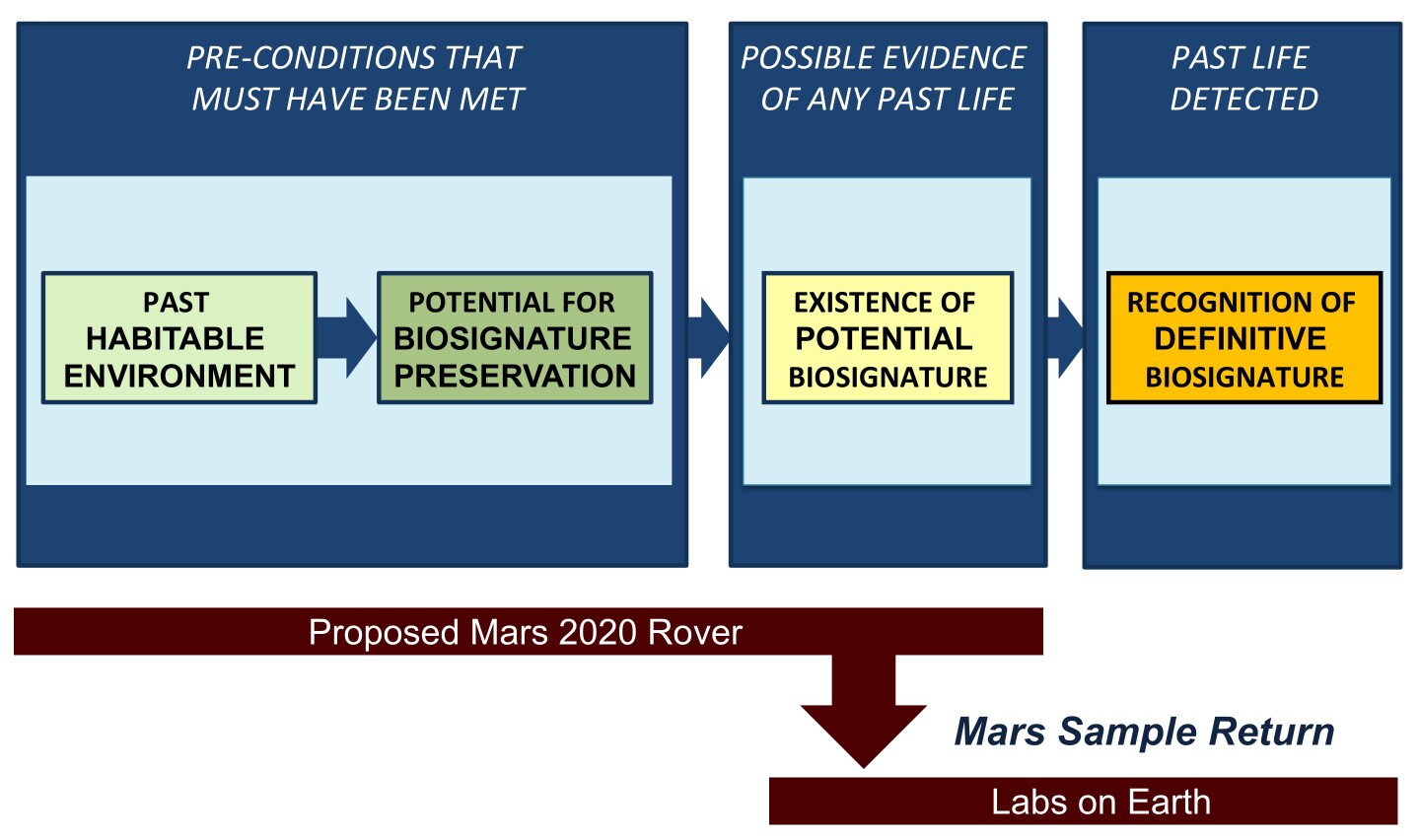While the Mars rovers Curiosity and Opportunity continue to set new records, NASA is looking at its next mission to the surface of the Red Planet. On Tuesday, the space agency released a 154-page report by the Mars 2020 Science Definition Team, which sets out the objectives and preliminary design of the probe scheduled to be sent to Mars in 2020. It's main task will be to seek out areas where life might exist and return samples to Earth.
The report was written by a team of 19 scientists and engineers appointed in January to outline mission objectives for the next rover mission at the end of this decade, and as a prelude to a manned mission tentatively scheduled for some time in the 2030s. The plan builds on the Curiosity, Opportunity and Spirit rovers, which have found evidence of water having once been present on ancient Mars.
"The Mars 2020 mission concept does not presume that life ever existed on Mars," says Jack Mustard, chairman of the Science Definition Team and a professor at the Geological Sciences at Brown University. "However, given the recent Curiosity findings, past Martian life seems possible, and we should begin the difficult endeavor of seeking the signs of life. No matter what we learn, we would make significant progress in understanding the circumstances of early life existing on Earth and the possibilities of extraterrestrial life."

The current objective is to land a rover similar in design to Curiosity, using the same skycrane system to bring it to the surface of Mars. Since Curiosity has been so successful, it’s believed that reusing much of its mission design will keep costs and development time down. The actual payload and experiments will be chosen by an open competition.
The new rover will look for areas where life might have once existed, such as streambeds, or some other water-created feature. It would then conduct visual, mineralogical and chemical analysis down to the microscopic level in order to build as complete a picture as possible of the area and identify “biosignatures.” The rover would collect and package 31 samples of soil and rock cores, which would be sealed and later returned to Earth for further analysis.
The Mars 2020 mission study helped to define mission parameters by looking at how to collect samples, how to cache them, and how to maintain sample integrity. The purpose of this was not only to figure out how samples might be returned to Earth, but also how to use sample return to increase mission time and productivity by not having to do all the analysis on Mars. This is particularly important because dividing the work with Earth removes major power and resource limits from the rover.

According to NASA, the information would also help in planning a future manned mission by identifying hazards, such as the highly reactive Martian dust, and how to collect carbon dioxide to manufacture rocket propellants.
"The Mars 2020 mission will provide a unique capability to address the major questions of habitability and life in the solar system," says Jim Green, director of NASA's Planetary Science Division in Washington. "This mission represents a major step towards creating high-value sampling and interrogation methods, as part of a broader strategy for sample returns by planetary missions."
Source: NASA










